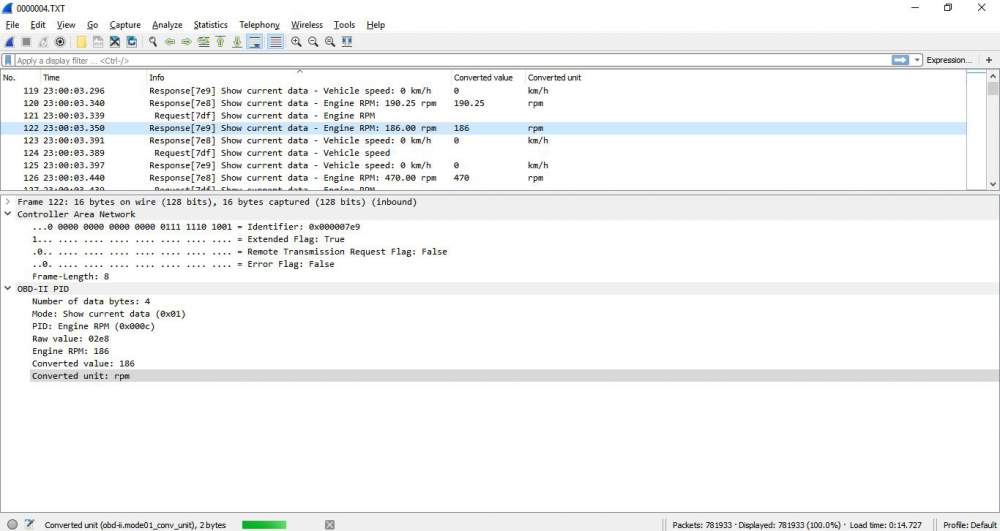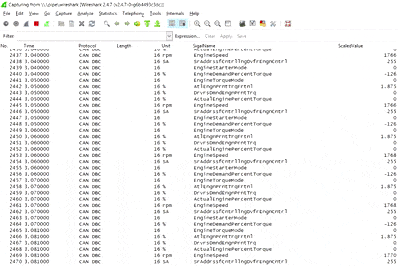Dbc File Viewer Online
How Does DBC Conversion Work?A CAN bus DBC file is simply a database format structured around CAN Messages (e.g. EEC1) and Signals (e.g. RPM).The DBC format is proprietary, but a number of online DBC wikis detail the basic concepts.The core of a DBC file consists of CAN Messages and their Signal details, structured as below:A few comments on the DBC structure above:. Each CAN Message contains 1+ CAN Signals.
.JPG)
Can Dbc Files
The 'DBC Message ID' adds 3 extra bits for 29 bit CAN IDs as an 'extended CAN ID' syntax. Bit positions start at 0 - above example Signal starts after the 3rd byte with a 2-byte length. The Sender and Receiver reflect sending & receiving nodes. More info (e.g. Descriptions, value tables) can be added later in the DBC fileIn short, the CAN DBC file is a standardized format for storing the rules for converting raw CAN bus data.Standard vs. Proprietary DBC Files: For standardized cases like the SAE J1939, you can use the same DBC across many vehicles to convert most data.
However, for proprietary CAN protocol systems (e.g in cars), typically only the OEM will have the conversion rules. If you do not have access to the rules, you may be able to some of the information.

Can Dbc File Viewer
Example - J1939 RPM ConversionLet's assume we logged raw J1939 data from a transit bus and want to 'manually' convert the RPM data.First, we paste all logged CAN IDs into a converter to see what J1939 PGNs our data contains.One of the CAN IDs, 0CF00400, equals the PGN F004 (DEC: 61444), i.e. From the J1939 standard, we identify that this contains the SPN/CAN signal EngSpeed (aka RPM) - with conversion rules as in the previous illustration.To convert a single CAN frame observation, we extract the 2 date bytes after byte 3 (e.g. 68 13), swap order (little endian) and convert to decimal (4,968).

To 'scale' this RPM data to human readable form, the J1939 standard dictates a linear conversion as below:Scaled Value = Offset + Scale x Raw Decimal Value621 RPM = 0 + 0.125 x 4,968Basically, CAN software mimics the above process using the parameters of your DBC file.For more on DBC conversion, check our J1939 DBC product page (incl. J1939 sample data & DBC):How To Convert Live CAN Data via DBC in WiresharkWireshark does not by default support CAN DBC conversion - but our solves that!With the plugin, you can easily load e.g. Your and stream converted J1939 data in real-time using a CLX000 as CAN interface.The plugin has many other features incl.
File Viewer Mac
And a for reverse engineering.For a general intro to streaming CAN bus data with the CLX000, see our. 1Create GraphsData plots are easily done in Wireshark - also in real-time!Simply go to Statistics/IO Graph. Here, you can start by setting the X-axis to show 'Time of day' and the Y-axis unit to 'Advanced.' Next, set the Calc field to 'AVG(.)' and to the right enter “can-dbc.” in the field.
This brings up a drop-down to scroll through Messages and Signals of the DBC file. Select one and click the Graph button to plot it. Remember to set a reasonable interval frequency to avoid funky plots (e.g. 10s or 1 min).